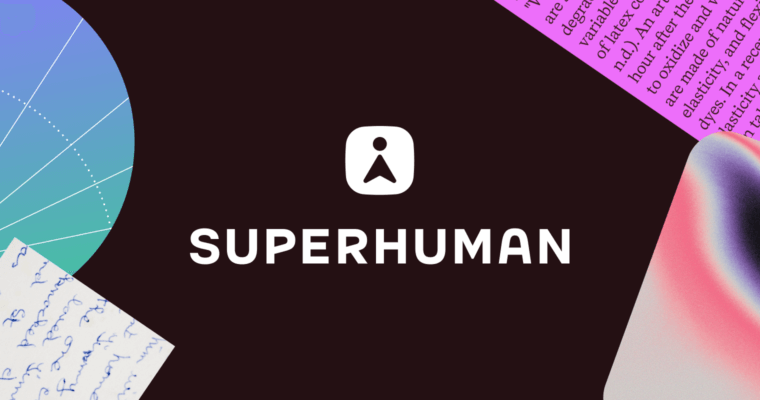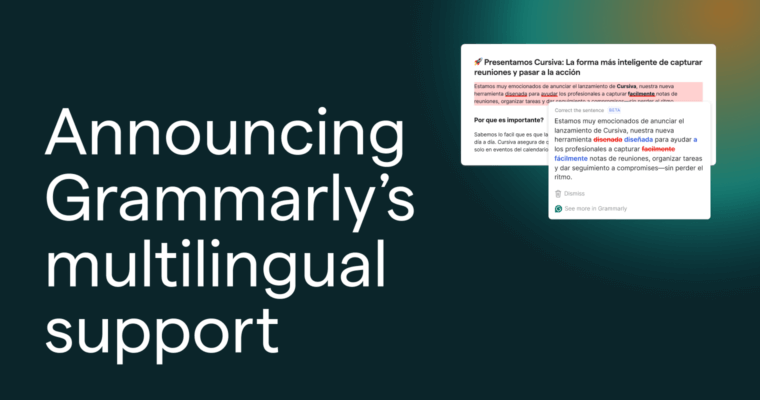
For over 15 years, Grammarly has worked to earn our users’ trust and safeguard their data while using AI to help millions of people communicate more easily and effectively. That’s why we prioritize privacy and built a multi-layered security program, with third-party attested industry certifications and customer testimonials to prove it. With that said, work in user trust is continuous, and we firmly believe that continuing to provide our users with more transparency and control as we evolve our services is essential to remain the most trusted writing partner.
Today, we’re taking another step to increase transparency: we are releasing a new technical specifications page to provide our users with more “under-the-hood” information on how Grammarly works with user data. We are also announcing a privacy policy update, something we do as needed to ensure our users remain aware of how we use and protect personal data as we evolve our services. The main change in this latest update is to explain that we may use personal data to provide our users with a more personalized writing experience.
What is a personalized writing experience? At Grammarly, we know communication is deeply personal and recognize that great writing suggestions must feel authentic to our users. For example, when communicating with a colleague at work, Grammarly could anticipate how your audience may respond, or what questions they may have, and provide suggestions before you send the message to help you be understood as you intend. From a user data perspective, this would mean that Grammarly would store portions of your current thread of conversation with your colleague.
As we design these new personalized experiences, data privacy remains at the heart of our product strategy. We want our customers to understand how each feature leverages their data (transparency) and then enable them to make their own decision (control) about whether they would like to use a particular feature or not, based on their privacy preferences and the value they get from the feature. And since we view privacy as a core part of Grammarly products, we make our privacy features available to all customers, regardless of whether they use a free or paid version of Grammarly.
We provide transparency through a number of product features and industry-leading practices. Any Grammarly user can go to their Account Settings and request their Personal Data Report (PDR). The PDR is automatically made available for download within hours and contains the data associated with the requesting customer, which, at the time of the request, Grammarly has in storage on our cloud servers. This feature enables our customers to have better visibility into Grammarly’s data practices. We also recognize that some customers may appreciate a deeper understanding of how Grammarly works. To that end, we’ve released a new technical specifications page with a detailed overview of how data is used to deliver the Grammarly experience. Finally, we take great care in how we communicate privacy policy updates to our customers: we notify every active Grammarly customer 60 days in advance of an updated privacy policy going into effect in our products to give them ample time to review our changes.
We provide control through a number of in-product privacy features. As we help our customers improve their writing across over 500,000 sites and applications, we empower them to turn Grammarly on or off in a specific site or application as they see fit, for a period of time or forever. This then prevents Grammarly from accessing the content within the site or application. For the content Grammarly has permission to access, we differentiate between two underlying data usage purposes: 1) Providing the service, and 2) Improving our products.
Providing the service: We use the personal data of users only as necessary to provide the Grammarly service to the particular customer whose user data is at issue. This includes both essential user account information, such as the primary email address or billing information, but also any data required to power a personalized writing feature that a user might have enabled. As we continue to launch new personalized experiences for our customers, we will continue to offer enhanced controls for users to enable, disable, and adjust any personalized features in accordance with their privacy preferences.
Improving our products: A small sample of all text that Grammarly processes is run through our privacy-preserving algorithms, which de-identify or aggregate this small sample. This de-identified aggregate sample is then stored on our servers for a finite period of time to help improve the quality of our services. Once more, all our customers are empowered to control whether their data can be used by Grammarly to improve our products via their account settings. Finally, we provide an in-product experience for all customers to determine whether they would like to be contacted by us via email for marketing and product announcements.
At Grammarly, we continue to believe that providing our customers with transparency and control is core to bringing the most delightful and personalized user experiences to life. If you have any questions about our privacy or security practices, please contact our Support team here.






